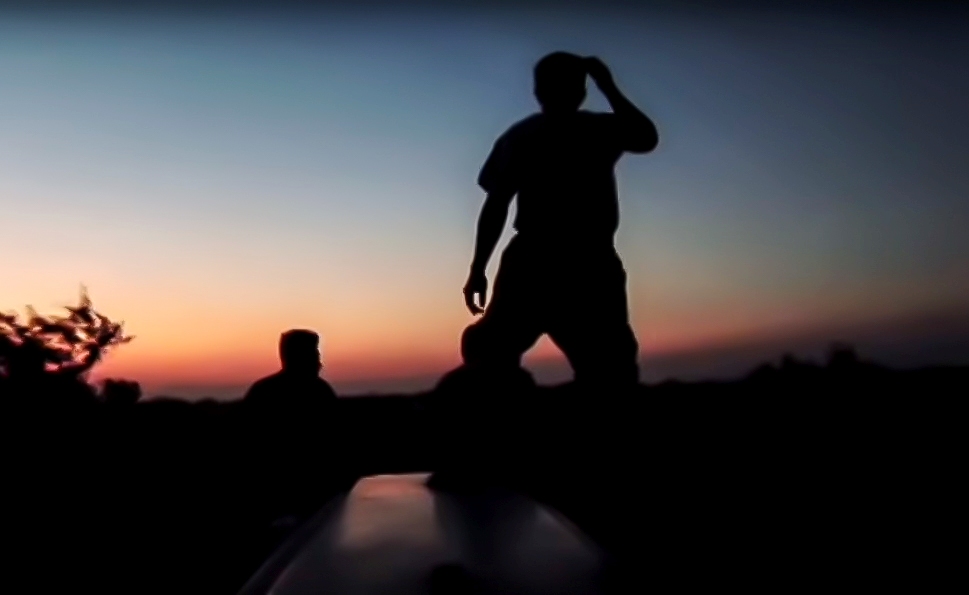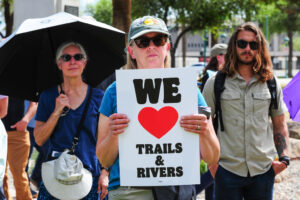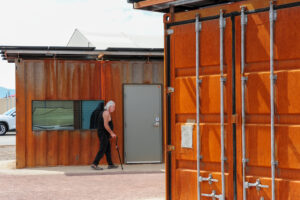(Phoenix, Arizona) — In the United States many people refer to them derogatorily as “illegals.” In the heart of Central America, these human beings represent some of the most disposed, desperate yet tenacious men and women leaving their impoverished countries in hopes to make it to the United States.
Unable to afford another form of transportation but also seeking to avoid Mexican immigration checkpoints, thousands of Central American nationals from countries like El Salvador, Guatemala, Honduras or Nicaragua, dangerously and boldly hop on top of moving freight trains going from southern Mexico to many northern destinations along the U.S.-Mexico border.
Related → Central America Needs a Regional Commission to Prosecute Corruption, Not a War on Migration
Prior to hopping on top of the treacherous train cars, Central Americans first have to defy the Suchiate River that serves as border between Guatemala and Mexico, go through its muddy banks, risk assaults, muggings and rapes. If they are able to overcome all these obstacles, the biggest of all challenges is still ahead: getting on the sordid, brutal moving train cars.
This scenario, along some of the most heartbreaking stories of human drama, is what Mexican journalist and filmmaker Pedro Ultreras (7 Soles, 2008) presents in a new documentary called “La Bestia” (Spanish for The Beast). “The Beast” is the name Central American migrants give to the freight trains– thus the name of Ultreras’ amazing work. “The Beast” also has the dark reputation of being “The train of death.”
Ultreras’ merit consists mostly in riding on top of the freight trains with the migrants, capturing the perilous journey just as these men and women riding “La Bestia” experience it. Nevertheless, the intrinsic value of this promising filmmaker’s documentary is to expose the tragic reality of thousands of people who desperately try to flee the ravaging conditions in their home countries.
La Bestia –the documentary– is an accurate visual testimony that undeniably communicates in a brutal language the travails migrants go through in their frantic attempt to escape their misery. Many in the U.S. see these migrants as a nuisance, invaders, criminals and so forth. La Bestia presents them in its most inherent perspective as some of the most deprived human beings willing to risk not just their safety but their very lives in hopes to arrive to a country where their idea of an American Dream often turns into another overwhelming experience.
Mexico’s southern border in need of more laws
In filming the testimonies of some Central American migrants, Pedro Ultreras exposes more than the dangers they face. If La Bestia shows the brutality of Mexico’s southern border, it also offers the compassion found in shelters for migrants and the bonds that develop among the men and women who share the same ride and misfortune.
Just a month ago, in February 2011, the Mexican Senate approved the first immigration law of the country. While it may be hard to believe, up until now, Mexico did not have a specific law to deal with immigration issues. The Mexican government approached immigration-related problems by using general population laws.
A new Immigration Act was unanimously passed by the Senate which for the first time recognizes the legal status of foreign migrants. This legislative move recognizes that foreigners have the right to education, emergency medical services, civil registration and the administration of justice regardless of their immigration status.
In terms of punishment for human smugglers or “coyotes”, the Act establishes eight to 16 years in prison, and increases the penalty by up to 50 percent when the accused is a public servant, and the victims are children or teenagers.
The law also sets minimum conditions for migrants. Among those are: avoiding confinement in prisons; preserving the family unit; and separating men from women. This new legislation prohibits the verification visits to places of humanitarian assistance provided to migrants.
The Immigration Act comes as a response to the gruesome massacre of 72 immigrants in San Fernando, Tamaulipas, in eastern Mexico, on August 24, 2010. Mexican government officials stated it appeared the migrants were slain for refusing to work for a drug cartel. Only one migrant survived.
The massacre also led to the resignation on Sep. 15 of Mexico’s top immigration official, Cecilia Romero, who came under fire and was summoned to testify before the Mexican Senate.
The victims of the massacre were nationals of El Salvador, Guatemala, Honduras, Ecuador and Brazil. They were making their way to the United States through Mexico’s territory, just like many of the migrants Pedro Ultreras presents in his documentary La Bestia.
Related video: The Beast
© 2011 - 2025, Eduardo Barraza. All rights reserved.





